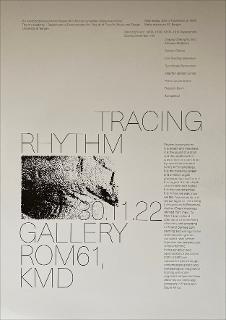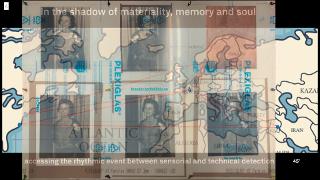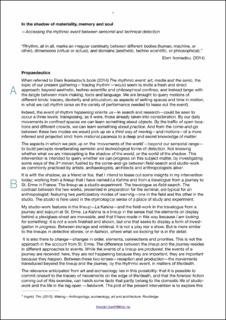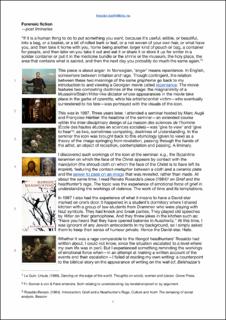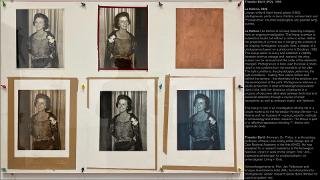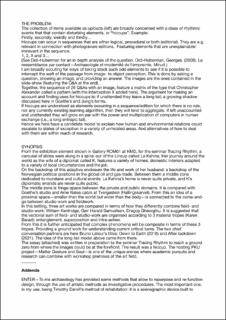| dc.description.abstract | THE PROBLEM:
The collection of items available as uploads (left) are broadly concerned with a class of rhythmic events that that contain disturbing elements, or “hiccups”. Example:
Firstly, secondly, weirdly and thirdly…
Hiccups can occur in sequences that are either logical, procedural or both (editorial). They are e.g. relevant in connection with photogravure editions. Featuring elements that are unexplainable/irrelevant in the sequence.
1, 2, X and 3…
(See Didi-Huberman for an in depth analysis of the question. Didi-Huberman, Georges. (2008). La ressemblance par contact—Archaeologie et modernité de l’empreinte. Minuit.)
I am broadly scouting for ways of taking stock such odd elements to see if it is possible to intercept the weft of the passage from image- to object perception. This is done by asking a question, showing an image, and providing an answer. The images are the ones contained in the slide-show (featuring the Q&A at the end).
Together, the sequence of 26 Q&As with an image, feature a matrix of the type that Christopher Alexander called a pattern (with the interception X added here). The argument for making an account and finding uses for hiccups is: if unattended they leave a long tail, a growing shadow discussed here in Goethe’s and Jung’s terms.
If hiccups are understood as elements occurring in a sequence/edition for which there is no rule, nor any currently existing learning algorithm, then they will tend to aggregate. If left unaccounted and unattended they will grow on par with the power and multiplication of computers in human exchange (i.e., a long entropic tail).
Hence we here have a candidate model to explain how human and environmental relations could escalate to states of exception in a variety of un/related areas. And alternatives of how to deal with them are within reach of research. A solution that eliminates the problem—or, an answer that eliminates the question—contains no knowledge.
SYNOPSIS
From the exhibition element shown in Gallery ROM61 at KMD, for the seminar Tracing Rhythm, a carousel of slides were slung in a spiral out of the Lineup called La Kahina. Her journey around the world as the wife of a diplomat called K, features a variety of homes: domestic interiors adapted to a variety of local circumstances and the job.
On the backdrop of this adaptive enclosure the life and work of her husband: the Norwegian political positions in the global oil and gas-trade. Between them a middle zone dedicated to mundane and cultural events: La Kahina’s home is never quite private, and K’s diplomatic errands are never quite public.
The middle zone is fringe-space between the private and public domains. It is compared with Goethe’s studio and Arne Næss cabin at Tvergastein (Hallingskarvet). From this an idea of a proximal space—smaller than the world but wider than the body—is connected to the come-and-go between studio-work and fieldwork.
In this setting, three art works are compared in terms of how they differently combine field- and studio-work: William Kentridge, Geir Harald Samuelsen, Dragoş Gheorghiu. It is suggested that the vectorial sum of field- and studio-work are organised according to 3 material tropes (Karen Barad): entanglement, superposition and intra-action.
From this it is further anticipated that complex phenomena will be composite in terms of these 3 tropes. Providing a ground work for understanding current critical turns. The two chief conversation partners are here Bruno Latour’s titles: Down to Earth (2018) and After lockdown (2021). The idea of the long-tail model above came from there.
The essay (attached) was written in preparation to the seminar Tracing Rhythm to reach a ground zero from where the images could be at the forefront. The result was a hiccup: that is, it produced a phenomenological equivalent—or, the event—of Shannon’s definition of information as entropy.
On account of the multiplication of images perceived owing to the many instrumental shifts in the production of a photogravure, the techniques becomes an experimental laboratory to explore image collapse into object perception. The Kahina lineup attempts to transpose the production of this transition into an exhibition space, in making the image to object perception available to the viewer in the form of a debatable proposition.
However, the photogravure process also features an artistic proposition (exposition) as an active model of similar types of problem (outlined above): notably types of processes where object perception is indeterminately anticipated and proposed. Calling on a hammerbolt, or featuring a counter-beat.
As an entry/exit device in working with diary materials—as is the case in the National Library residency in which the project is currently hatching—photgravure has a similar function as the wind-rose on maps. One that steers towards the hatching of an object. Most probably a book.
The hosting PKU project—Matter Gesture and Soul—is one of the unique arenas where academic pursuits and research can combine with workshop premises of the art field. | en_US |
